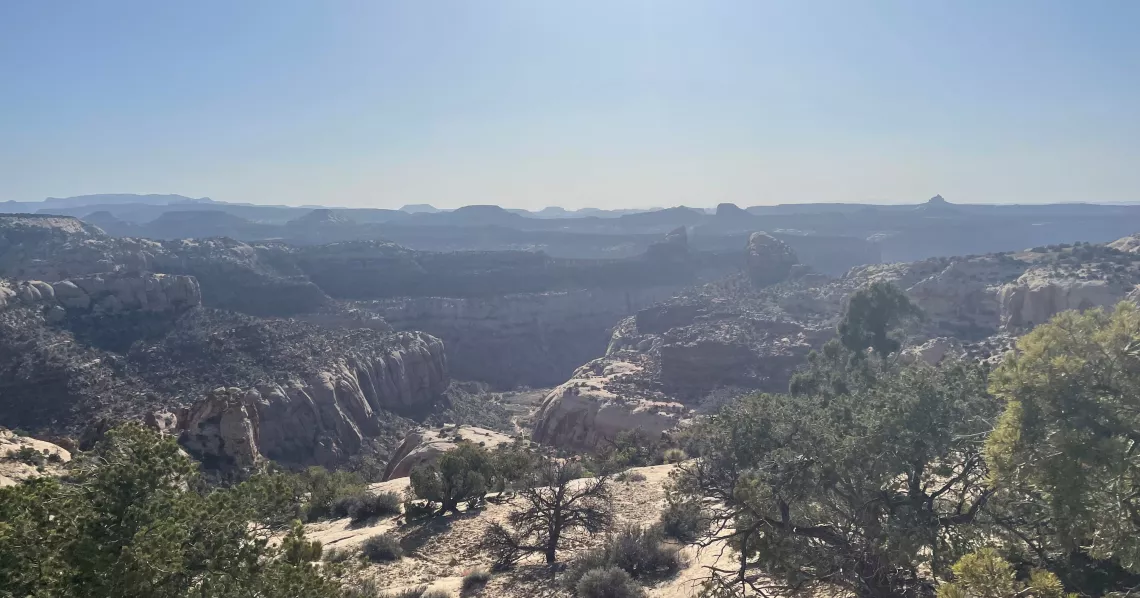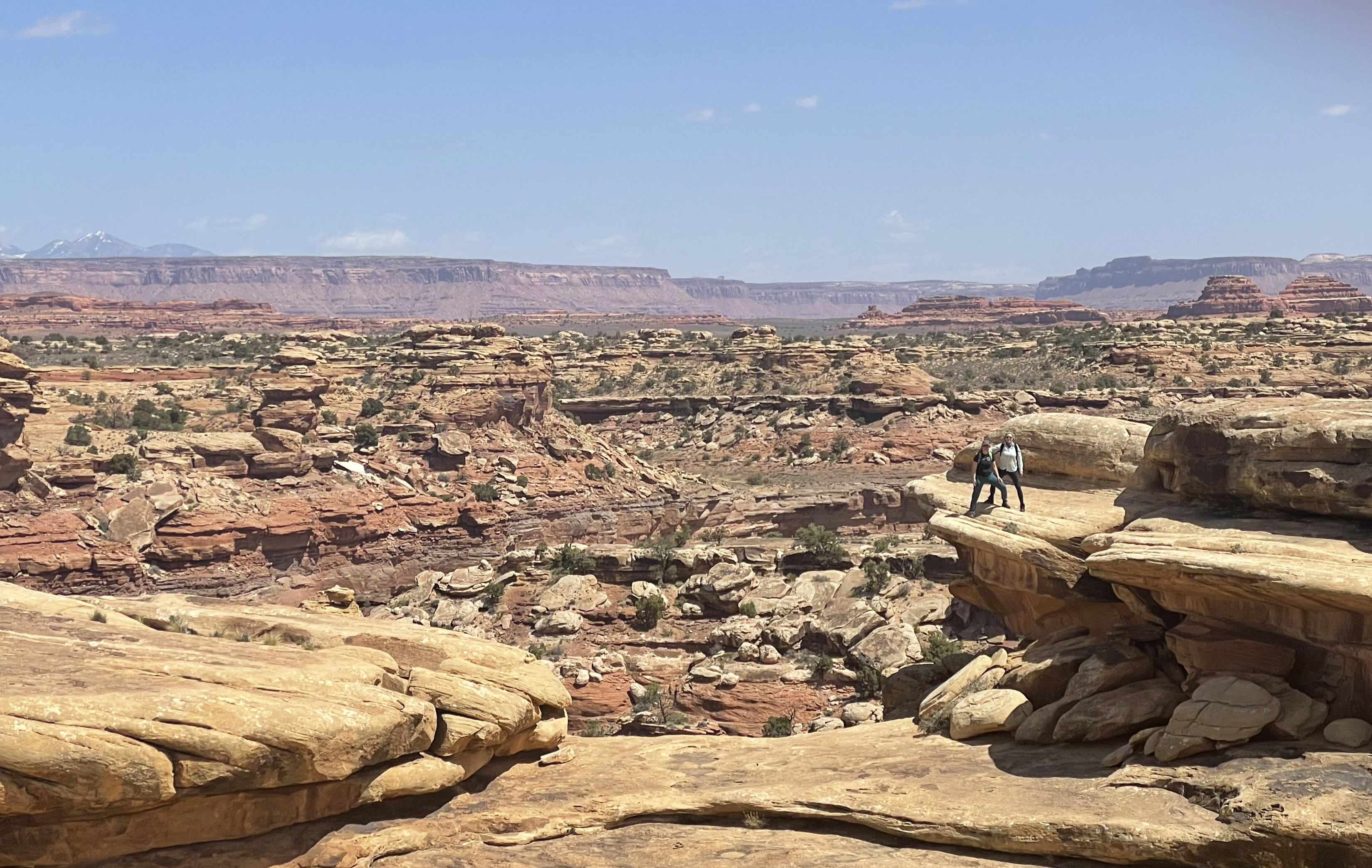I’ve lived in Utah for ten years, and not a year has passed without a trip to one of our spectacular national narks and monuments. This year was no exception, and made all the more special because for the first time, I took a trip with my mom to Utah’s Arches and Canyonlands National Parks. I was excited to share the famous views with her, but knew air quality would play a major role in whether we’d be able to enjoy them.
Arguably, the most iconic imagery symbolizing the state of Utah is the view of Delicate Arch framing the snow-capped peaks of the La Sal mountain range. Unfortunately, during our trip in April, that view was shrouded in a gray-brown veil that obscured the full dimension of the mountains and dulled the preceding red rock canyons in a blurry haze. According to National Park Service air quality monitoring, this phenomenon, called “regional haze”, obscures views at Arches and Canyonlands 83 percent of the time.
Across the country, haze impacts 90 percent of our country’s national parks. The same pollutants responsible for the widespread air pollution also harm our health, particularly in environmental justice communities targeted by generations of systemic racism. Air pollution from burning fossil fuels and other sources worsens community health, drives up healthcare costs, and makes it harder for kids to learn and play and adults to work.

The veil of haze that clouded the views for our trip was upsetting, but not surprising, considering that two of Utah’s largest coal-fired power plants belch uncontrolled nitrogen oxide pollution and other harmful emissions less than 100 miles upwind. Utah’s Division of Air Quality modeling shows that Hunter and Huntington coal plants are a leading cause of the haze in Arches and Canyonlands. These two plants are both owned by Berkshire Hathaway’s Pacificorp utility and rank 2nd and 18th, respectively, on a nationwide list tracking top sources impacting park visibility. The Environmental Protection Agency (EPA) supports these observations: It’s determined that Hunter and Huntington contribute to noxious haze in nine nearby national park and wilderness areas.
The Sierra Club and our local partners have spent years working to ensure that visitors and residents who live and recreate in Utah’s iconic parks have clean air to breathe. But now after almost two decades of Regional Haze planning, the state’s failure to get these two giant coal plants cleaned up stands in the way. Most recently, the Air Quality Board voted in July to advance a plan that declines to require industry-standard control technology on our largest polluters. This is after the state has had multiple chances to address uncontrolled pollution from Hunter and Huntington with selective catalytic reduction (SCR) that can cut up to 75 percent of haze-causing emissions. By advancing a flawed plan that rejects SCR, the Utah Department of Environmental Quality and the Air Quality Board are abdicating their moral and legal responsibility to protect clean air for Utahns.
It's past time for the EPA to step in. Use your voice to urge EPA to prioritize clean air for Utah’s parks and people.
Air pollution remains one of the most consequential climate issues of our time, yet states like Utah have continued to fail to submit federally compliant plans that hold these polluters accountable. After seeing the drafted state plan, the Environmental Protection Agency (who approves or rejects the plan) sent a preliminary comment letter to the Division of Air Quality in May, stating that “The EPA has concerns that Utah’s choice of control measures during this planning period do not equate to actual reductions in emissions.”
Meanwhile, Utahns have been clear in their calls for stronger pollution controls, turning out to share comments in public hearings, and participating in public comment periods in support of taking action. More than 650 public comments were sent to DAQ to urge greater protections for Utah’s parks. Commenters included the Grand County Council, National Park Service Superintendents, Moab City Council, local environmental advocates, and hundreds of Utah residents.
Now, it is up to the EPA to use its authority under the Clean Air Act to lock in retirement dates for coal plants, and require big polluters to reduce emissions to restore air quality and improve public health. It is long past time for Utah’s corporate polluters to be held accountable, and the clock is ticking.
